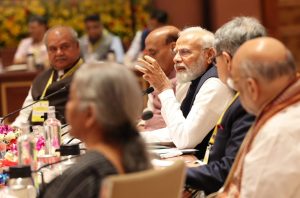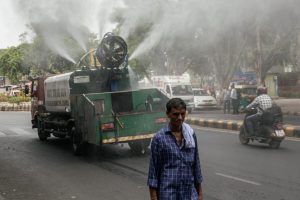Crop insurance tweaks on anvil; Centre seeks states to board scheme

By Our Special Correspondent
New Delhi, November 24: With the ruling Bharatiya Janata Party facing challenges of a number of state elections next year in the run up to the 2024 Lok Sabha polls, the Centre is gearing to further amend the crop insurance scheme, which for decades has failed to meet the expectations of the farmers.
While Narendra Modi-led NDA government at the Centre had unveiled the Pradhan Mantri Fasal Bima Yojna after several rounds of the consultations with stakeholders, a number of states opted out of the scheme due to the cost sharing model. The states have shown preference to stick to the compensation model, while the farmers have been complaining that the insurance companies have been benefiting in place of them under the PMFBY.
The Centre also wants to amend the crop insurance scheme amid the visible impact of the climate change, which this year showed excessive rains in a few states, while farmers reeled under drought like conditions in other states. Manoj Ahuja, secretary in the Union Ministry of Agriculture and Farmers Welfare, said: “Since farming is exposed directly to such climatic catastrophes, it is important and critical to protect the vulnerable farming community of the country from the vagaries of nature. As a result, demand for crop insurance is likely to increase and therefore we need much more emphasis on crop and other forms of rural/agricultural insurance products to provide sufficient insurance protection to the farmers in India.”
He also clarified that some States have opted out of the PMFBY primarily due to inability to pay their state share of premium subsidy due to financial constraints. Andhra Pradesh joined back the scheme from July 2022 onwards and it is expected that the other states are also considering to join the scheme to provide comprehensive coverage to their respective farmers, the official stated.
Ahuja stated that in the last six years, only Rs 25,186 crores have been paid by farmers wherein Rs 1,25,662 crores have been paid to the farmers against their claims, with Central and State Governments bearing most of the premium under the scheme. The share of non-loanee farmers, marginalized farmers and small farmers have increased by 282 per cent since the initiation of the scheme in 2016, added Ahuja.
In 2022, several reports of excess rainfall came from Maharashtra, Haryana and Punjab, while Madhya Pradesh, Uttar Pradesh, Bihar and Jharkhand reported deficit rainfall, eventually damaging crops like paddy, pulses and oilseeds. Of late, instances of such uncertainties – thunderstorms, cyclones, droughts, heat waves, lightening, floods and landslides have also increased, occurring almost every day in India in the first nine months of 2022, as reported in several Science and Environment Dailies and Journals.
“World Economic Forum’s Global Risk Report 2022 categorise Extreme Weather Risk as second largest risk over next 10 years period and such sudden shifts in weather patterns are capable of adversely impacting our country,” added Ahuja.






